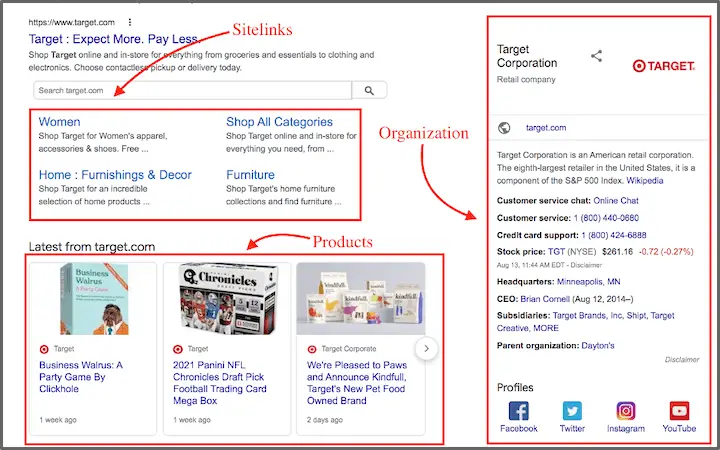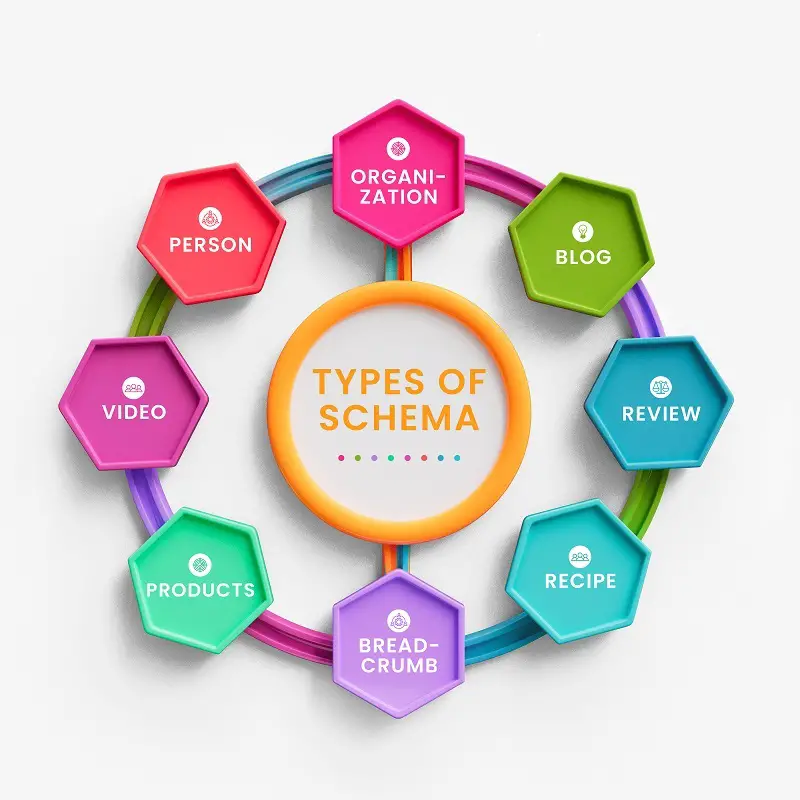Schema markup is a powerful tool for advanced SEO. It helps search engines understand your content better and improve rankings.
Mastering schema markup can significantly enhance your website’s visibility and search engine performance. Schema markup, or structured data, involves adding specific tags to your HTML to provide more detailed information to search engines. This advanced SEO strategy ensures that search engines can interpret and display your content more effectively.
As a result, your website can achieve higher click-through rates and better engagement. Implementing schema markup is crucial for standing out in the crowded digital landscape. It provides a competitive edge by making your content more accessible and appealing to both search engines and users.
Introduction To Schema Markup

Welcome to the world of Schema Markup. This tool can elevate your SEO strategy. It enhances how search engines understand your content. Let’s dive into its importance and benefits.
What Is Schema Markup?
Schema Markup is a form of microdata. It helps search engines read your website content better. You add it to your HTML to improve search results.
This microdata creates rich snippets. Rich snippets are enhanced descriptions in search results.
Here is a simple example of Schema Markup code for a recipe:
Importance In Seo
Using Schema Markup is crucial for advanced SEO. It helps search engines understand your website better. This understanding leads to higher rankings.
Here are some key benefits of using Schema Markup:
- Enhanced search results
- Increased click-through rates
- Better user experience
Let’s break down these benefits:
| Benefit | Description |
| Enhanced search results | Rich snippets make your results stand out. |
| Increased click-through rates | More appealing results attract more clicks. |
| Better user experience | Users find what they need faster with rich snippets. |
To sum up, Schema Markup is essential for modern SEO. It improves visibility and user engagement.
Types Of Schema Markup

Schema markup is an essential tool in advanced SEO. It helps search engines understand your content better. This leads to improved rankings and visibility. There are various types of schema markup to consider. Each type has a specific purpose and use case.
Common Types
Common types of schema markup include Organization, Person, Product, Event, and Review. These types are widely used across different websites.
- Organization: Provides details about a company, including its logo and contact info.
- Person: Offers information about an individual, such as their name and job title.
- Product: Describes a product’s features, price, and reviews.
- Event: Shares details about events, including dates, locations, and ticket info.
- Review: Displays customer reviews and ratings for products or services.
Industry-specific Markup
Industry-specific markup caters to particular sectors. This ensures that search engines get precise information.
| Industry | Schema Type | Description |
| Healthcare | MedicalCondition | Details about medical conditions. |
| Education | Course | Information about courses offered. |
| Real Estate | Place | Details about properties and locations. |
| Local Business | LocalBusiness | Info about local businesses, including hours and services. |
| Recipes | Recipe | Steps, ingredients, and cooking time for recipes. |
Implementing Schema Markup
Schema Markup helps search engines understand your content better. This simple addition can boost your SEO and improve visibility. Implementing Schema Markup is straightforward and highly beneficial.
Step-by-step Guide
Follow these steps to add Schema Markup to your website:
- Identify the type of content you have.
- Visit Schema.org to find the right markup.
- Generate the markup using tools like Google’s Structured Data Markup Helper.
- Insert the generated code into your HTML.
- Validate your markup using Google’s Structured Data Testing Tool.
Tools And Resources
Using the right tools can simplify Schema Markup implementation. Here are some useful resources:
- Google’s Structured Data Markup Helper: Helps generate schema markup code.
- Schema.org: Official resource for all schema types and properties.
- JSON-LD Generator: Easily create JSON-LD structured data.
- Google’s Structured Data Testing Tool: Validate your schema markup.
Schema Markup can significantly enhance your SEO strategy. By following the steps and using the right tools, you can ensure your content is easily understood by search engines.
Enhancing Visibility
Unlocking the secrets of advanced SEO can boost your website’s visibility. One powerful tool is schema markup. By adding structured data to your site, you can help search engines understand your content better. This leads to higher rankings and more clicks.
Rich Snippets
Rich snippets are enhanced search results. They display extra information like ratings, prices, or images. These snippets make your content stand out. Users are more likely to click on these detailed results.
| Type of Rich Snippet | Benefit |
| Reviews | Shows star ratings |
| Products | Displays price and availability |
| Recipes | Includes cooking time and ingredients |
Featured Snippets
Featured snippets appear at the top of Google search results. They provide quick answers to user queries. This prime position can drive more traffic to your site. There are different types of featured snippets:
- Paragraph snippets – Offer brief answers to questions
- List snippets – Show steps or items in a list
- Table snippets – Present data in a table format
Optimizing for featured snippets involves structuring your content clearly. Use headers, bullet points, and short sentences. This helps search engines identify the best answers.
Implementing schema markup is a game-changer. It enhances visibility and attracts more clicks. Your website can dominate search results with rich and featured snippets.
Improving Click-through Rates
Improving click-through rates (CTR) is essential for maximizing your website’s visibility. Schema markup is a powerful tool for enhancing your search engine results pages (SERP) presence. By implementing schema markup, you can make your listings more attractive and engaging. This post will explore how schema markup helps in improving CTR through attractive SERP displays and its impact on user engagement.
Attractive Serp Displays
Schema markup transforms your standard search results into rich snippets. These rich snippets stand out in the SERP. They include extra information like ratings, reviews, and images. Users are more likely to click on these enhanced results.
- Ratings and Reviews: Display star ratings and user reviews.
- Images: Add relevant images to your search results.
- Product Information: Show prices and availability.
These enhancements make your listing more visually appealing. Users can quickly understand the value of your content. This increases the chances of clicks.
Impact On User Engagement
Rich snippets not only attract clicks but also improve user engagement. When users see detailed information, they are more likely to interact with your content. This reduces bounce rates and increases time spent on your site.
- Lower Bounce Rates: Users find what they need faster.
- Increased Time on Site: Engaging content keeps users on your page.
- Higher Conversion Rates: Detailed information leads to informed decisions.
Schema markup provides users with a preview of your content. This sets the right expectations before they click. As a result, they are more likely to stay and explore your site further.
| Schema Type | Benefit |
| Product Schema | Displays prices, availability, and reviews. |
| Recipe Schema | Shows cooking time, ingredients, and ratings. |
| Event Schema | Highlights dates, locations, and ticket prices. |
By leveraging schema markup, you not only make your search results attractive but also ensure users engage with your content. This leads to improved click-through rates and better overall performance for your website.
Measuring Success
Unlocking the potential of advanced SEO with schema markup is transformative. But how do you measure success? This section delves into effective methods for tracking and analyzing the impact of schema markup on your site’s SEO performance.
Tracking Performance
Effective tracking of your SEO efforts is essential. Use Google Search Console to monitor key metrics. Check for impressions, click-through rates (CTR), and average position in search results.
Consider using tools like Google Analytics and SEMrush for more detailed insights. These tools help in understanding user behavior and traffic sources. Monitoring these metrics regularly helps in identifying trends and making informed decisions.
Here is a table to showcase important metrics:
| Metric | Tool | Importance |
| Impressions | Google Search Console | High |
| Click-Through Rate (CTR) | Google Search Console | High |
| Average Position | Google Search Console | Medium |
| User Behavior | Google Analytics | High |
Analyzing Results
Analyzing your results is crucial for understanding what works. Break down the data to see which schema types perform best. Identify patterns and correlations between schema markup and user engagement.
Focus on the following aspects:
- Structured Data Reports: Use these to identify errors and warnings.
- Rich Results: Check if your schema is generating rich snippets.
- Traffic Changes: Compare traffic before and after implementing schema.
Regular analysis helps in refining your strategy. Make adjustments based on what the data tells you. This approach ensures continuous improvement and better SEO performance.
Common Mistakes To Avoid
Schema Markup is powerful for SEO. It can boost your visibility. But, many people make mistakes. These mistakes can harm your SEO efforts. Below are some common mistakes to avoid.
Incorrect Implementation
Incorrect implementation is a frequent mistake. Ensure your schema code is valid. Use Google’s Structured Data Testing Tool to check for errors. You can use Schema.org to find the right type.
| Incorrect Implementation | Correct Implementation |
|
{
“@context”: “http://schema.org”, “@type”: “Product”, “name”: “Product Name”
|
{
“@context”: “http://schema.org”, “@type”: “Product”, “name”: “Product Name”, “image”: “http://example.com/image.jpg”, “description”: “Product description here.”, “brand”: { “@type”: “Thing”, “name”: “Brand Name” }, “sku”: “12345”, “offers”: { “@type”: “Offer”, “priceCurrency”: “USD”, “price”: “29.99” } }
|
Over-optimization
Over-optimization can hurt your SEO. Don’t add too many schema types. Avoid stuffing keywords into your schema markup. Quality over quantity is key. Ensure the schema is relevant to your content.
- Don’t use too many schema types.
- Ensure relevance to the content.
- Avoid keyword stuffing.
Follow these tips for better results. Your website will rank higher. Users will get the best experience.
Future Of Schema Markup
The future of Schema Markup is bright and full of promise. As search engines evolve, so do the methods for enhancing visibility. Schema Markup is at the forefront of this evolution. By understanding its future trends, businesses can stay ahead of the curve.
Emerging Trends
Several emerging trends are shaping the future of Schema Markup. These trends highlight the importance of staying updated. Let’s dive into these trends:
- Voice Search Optimization: More people use voice search. Schema Markup helps in providing accurate answers.
- Artificial Intelligence: AI is improving search algorithms. Schema helps AI understand content better.
- Enhanced Rich Snippets: Rich snippets are becoming more detailed. Schema Markup plays a key role in this enhancement.
Preparing For Changes
To stay ahead, businesses must prepare for changes in Schema Markup. Here are some steps to get ready:
- Stay Updated: Follow the latest Schema.org updates.
- Implement Best Practices: Use recommended schemas for your industry.
- Regular Audits: Conduct regular audits of your Schema Markup.
| Trend | Impact |
| Voice Search Optimization | Improves search accuracy |
| Artificial Intelligence | Enhances content understanding |
| Enhanced Rich Snippets | Increases visibility |
Frequently Asked Questions
How To Boost Your Seo By Using Schema Markup?
Use schema markup to structure your website’s data. This helps search engines understand content better. Add relevant schema types like articles, products, and reviews. Implement JSON-LD format for easy integration. Test with Google’s Structured Data Testing Tool. Boosts visibility and click-through rates.
What Is Schema Markup In Seo?
Schema markup is a code you add to your website. It helps search engines understand your content better. This can improve your site’s visibility and rich snippets in search results.
What Is Schema Markup Strategy?
Schema markup strategy involves adding structured data to your website’s HTML. This helps search engines understand your content better. It can improve your site’s visibility and enhance rich snippets in search results.
How Does Schema Affect Seo?
Schema improves SEO by enhancing search engine understanding of your content. It helps display rich snippets in search results. This can boost click-through rates. Better visibility leads to higher organic traffic.
Conclusion
Mastering advanced SEO with schema markup can transform your website’s visibility. It enhances search engine understanding and user experience. By implementing schema markup, you stay ahead of competitors. Start leveraging this powerful tool today. Your website will thank you with higher rankings and more traffic.
Embrace the future of SEO now.



